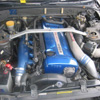Mobil 1 Engine Oil
Announcements
-
Similar Content
-
Latest Posts
-
Maybe but doubt it, when I jacked it up it was creaking in the j arm again. The inners are all good, I inspected them. Remember that also it did fix the problem but temporarily.
-
Once you lose the adjustable bushes, you have almost no adjustment at the front for anything that matters. You can only wind so master caster at the front, and ~7° is fine. You won't have choice of front camber. If you only have rear camber arms (ie, do not also have adjustable upper tension arms), you shouldn't change their length very much, because you will introduce bump steer. And, you will struggle to find a workshop that will be capable of doing all the adjustment work necessary to simultaneously achieve a decent rear camber number, get the toe right, and minimise bump steer. I would guess there's probably 8 hours of work there. So, stockish rear camber is fine. Although, keep in mind, that stock camber, by number value, does not mean stock arm length when the car is lowered. You will need to lengthen the RUCA to get back to stockish values and that will require the tension arm to be lengthened a little also. Without any other guidance, any change made to the RUCA should have the 2/3 of the same change made on the tension arm. But that is only a rough rule of thumb and the relationship might not remain linear across a wide range of adjustments. And it might not also be as close to minimum bump steer as you could achieve if you did the bump steer measurement and adjustment properly.
-
By Dose Pipe Sutututu · Posted
Well it does have a motor with the same DNA as an Accord V6 motor. The J30A is a successor to the Tiger rice cooker C32A motor found in those cars. -
FD RX7 I would probably marry if legal R32 GTR is toughest NSX looks like it's made from leftover Prelude and Accord bits
-





Recommended Posts
Create an account or sign in to comment
You need to be a member in order to leave a comment
Create an account
Sign up for a new account in our community. It's easy!
Register a new accountSign in
Already have an account? Sign in here.
Sign In Now